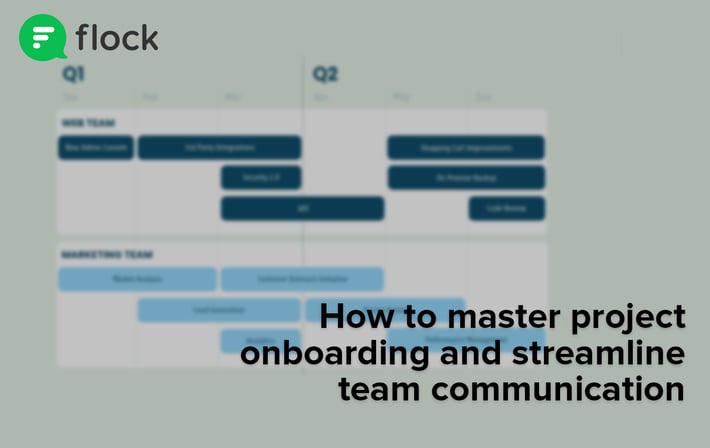 Analyze video engagement and use insights to craft powerful automated marketing strategies.
Analyze video engagement and use insights to craft powerful automated marketing strategies.
It’s no secret that video content carries the greatest conversion potential of any medium.
Videos attract 300% more traffic and help nurture leads. Landing pages with video content can earn up to 80% greater conversions than text or image-based landing pages.
Focusing on video content can significantly improve the customer experience. This is why CXOs are increasingly turning towards video. But they often have trouble justifying the actual business value video content generates.
Video Engagement Data: The Missing Piece to the Puzzle
Virtually every customer-oriented communication tool out there relies on engagement data. Email ROI is calculated based on open rates and conversion tracking. Social media marketing is full of advanced analytics.
But many executives fail to harness video engagement data and leverage its insights to automate SaaS marketing initiatives. Since YouTube and Facebook don’t share that data with users, people simply accept that they can’t glean those insights for themselves.
CXOs who leverage purpose-built video marketing platforms know better.
They can use advanced data analytics to measure the success of their video content, and then use those insights to segment audiences by video engagement. And all of that contributes to successful SaaS sales.
The ability to track and analyze video engagement only represents one half of its true value. The other is being able to use the insights video analytics generate as data points for further segmentation.
Tracking and Analyzing Video Engagement: The Strategic Approach
Most conventional video hosting platforms give users very limited access to viewer engagement data. You might have likes, dislikes, comments, and shares—but that is usually where analysis ends.
None of this data provides insight into the way individual viewers engage with specific videos. There is no way to qualify potentially misleading engagement data without more information.
For instance, a video with one million views is not necessarily more valuable than a video with one hundred. If one million people never look past the ten-second mark of the more-popular video, is it really offering value to viewers?
On the other hand, if you’re responsible for managing your customers’ experience, and your 100-views video generates more conversions than your one million-view video, wouldn’t that mean it is the more valuable asset?
Without the ability to track and analyze video engagement on an individual basis, it’s nearly impossible to make that assessment. The lack of data forces you to make assumptions that simply may not be true.
Engagement data drives the value video content represents. That starts with offering a more complete picture of how users interact with video content.
Using Video Engagement Data to Drive Optimization
Video engagement analytics can also play a more subtle role influencing the success of customer experience initiatives. The more data you can collect on user engagement, the better you can align that engagement with your existing messaging.
In the world of email, you may interpret a contact clicking on an email link as an indicator of interest. In a marketing automation scenario, that might trigger additional outreach – maybe another email, or a phone call.
In essence, every individual engagement action is an invitation for further interaction.
But even the most diehard customer experience professionals will admit that video generates greater engagement. When trying to drive user engagement, it simply makes sense to use the most compelling medium available. This is where interactive product demo software can be particularly effective, combining the power of video with user interactivity.
A B2B video hosting platform with advanced data analytics capabilities allows executives to use video engagement to trigger additional messaging, and tools like a video editor can further enhance the quality and impact of your content. FlexClip, for instance, offers intuitive AI-powered video editing features—such as text-to-video, image-to-video, and automatic subtitle generation—that help marketers quickly produce engaging videos optimized for user interaction. Instead of relying on email click-throughs, you can use customized engagement data as your trigger.
For instance, you may develop a compelling offer to send to qualified users who stopped watching your video after ten seconds. This might look something like an abandoned cart email, but focused on video interaction instead of leaving products in a shopping basket.
Alternately, you may be able to capture a list of visitors who watch your landing page video up to the halfway point. You could send a product demo to these users, knowing that they were interested enough to stay put for half the video’s length—but not compelled enough to convert on the spot.
Why YouTube Won’t Cut It: Brands Need Purpose-Built B2B Video Hosting Solutions
As the second-most frequented website in the world, YouTube has a lot going for it. It is by far the best place for entertainers, artists, educators, and celebrities to speak directly to their fans.
Many businesses have also tried to leverage YouTube’s reach to speak to their customers, with varying degrees of success. What works for Luis Fonsi of “Despacito” fame may not work for a B2B service provider. You simply have different goals, and your customer testimonial won’t gather 7 billion views or win any Grammys in the foreseeable future.
But that’s perfectly fine, because your business structure doesn’t need any of those things. Customer experience-oriented executives need things that YouTube doesn’t provide, like video engagement data and the ability to control click-through content for users.
Brands that use YouTube as their go-to video host are letting qualified leads slip through the cracks.
A certain percentage of viewers (YouTube won’t tell you exactly how many) will interact with B2B content, see a personalized ad based on their YouTube usage behaviors, and click right on through to the media giant’s page, leaving your content out of sight and out of mind.
This is all part of what makes YouTube so successful. Its ultimate goal isn’t helping marketers communicate with users. Its goal is to keep as many users as possible on YouTube, consuming the enormous amount of video content it makes available to them, and interacting with its advertising partners in the process. On that platform, there simply isn’t room for advanced analytics for anyone other than YouTube.
Start Integrating Video Engagement Data Into Your Marketing Campaigns
Traditional lead scoring relies on a pretty standard set of engagement statistics: demographics, company membership, and online behavior, among others. Imagine the potential your SAAS marketing team could leverage with high-performing video engagement data assigning individual value to leads on a scalable, automation-friendly basis. Choosing the right video hosting solution is the first step towards deploying next-generation marketing campaigns that focus on the customer experience.
Jesse Mitchell is a content writer for Cincopa. A powerful video marketing and hosting solution, Cincopa helps users untap their videos’ true business potential..

.png)






